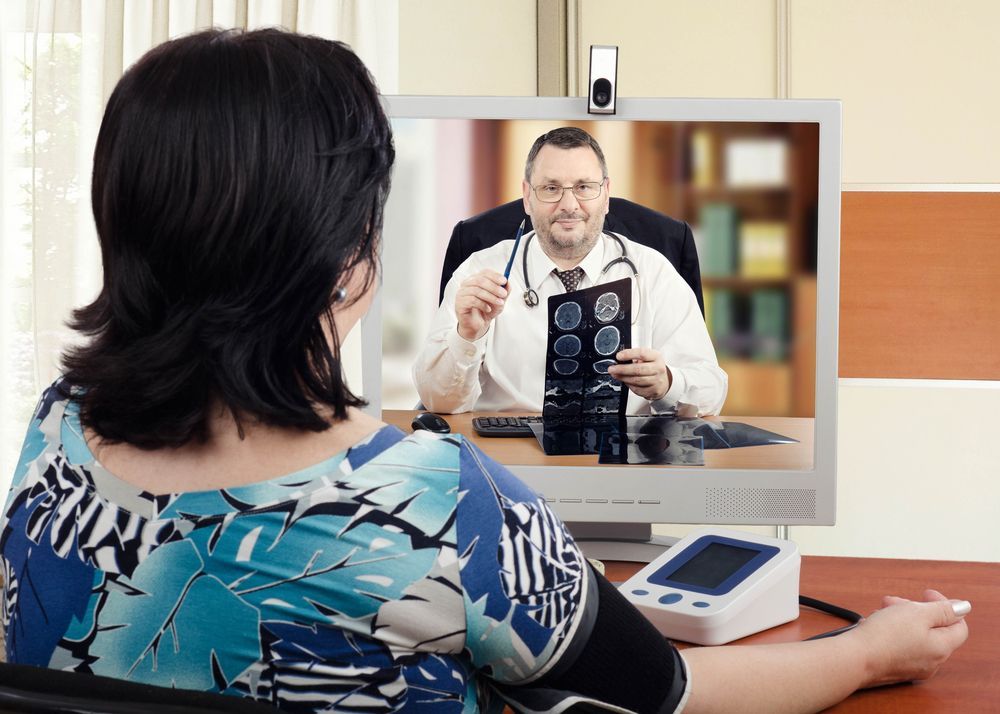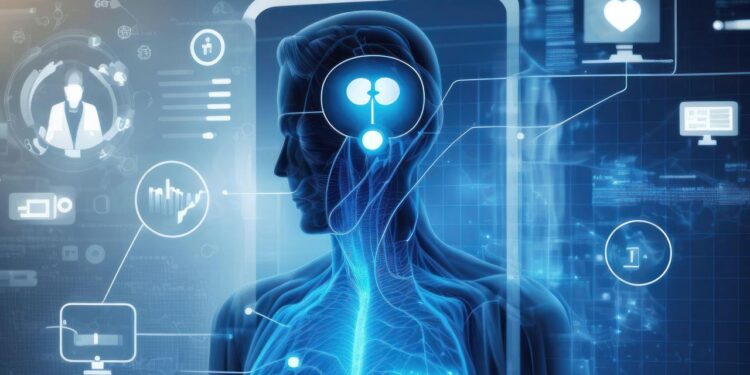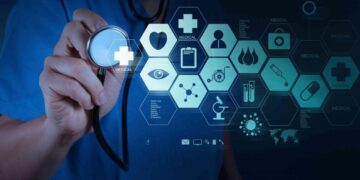Telemedicine has emerged as a revolutionary force in the delivery of healthcare services, fundamentally transforming the relationship between patients and providers. In an era where digital transformation is reshaping every industry, healthcare is no exception. The integration of telecommunication and medical services—commonly known as telemedicine—has not only expanded access to care but also improved outcomes, optimized resource allocation, and fostered patient engagement. This comprehensive article delves into the origins, technologies, benefits, challenges, and future trends of telemedicine, providing an in-depth exploration of its role in modern healthcare.
The rapid evolution of digital technology over the past few decades has paved the way for innovative solutions that address long-standing challenges in healthcare. Telemedicine, defined broadly as the remote diagnosis and treatment of patients through telecommunications technology, represents one of the most promising avenues for overcoming geographical, economic, and temporal barriers in health services. Whether through real-time video consultations or asynchronous messaging platforms, telemedicine has enabled healthcare providers to extend their reach beyond the traditional confines of clinics and hospitals.
This article aims to provide a detailed overview of telemedicine’s multifaceted impact on modern healthcare. By exploring its historical development, technological underpinnings, and practical applications, we hope to offer readers a clear understanding of how telemedicine is reshaping the medical landscape. Additionally, we will discuss the benefits, challenges, and future directions of telemedicine, ensuring that all aspects of this transformative field are thoroughly examined.
A Brief History of Telemedicine
The concept of telemedicine is not as recent as many might think. Its roots can be traced back to the early 20th century, when advancements in telecommunications technology began to hint at the possibility of remote healthcare delivery. Early iterations of telemedicine involved simple communication methods, such as telephone consultations, which allowed physicians to provide medical advice from a distance.
Key Historical Milestones
A. Telephone Consultations:
The invention of the telephone enabled early forms of remote patient care. Physicians used telephone calls to consult with patients and advise them on treatment, particularly in rural areas where access to medical facilities was limited.
B. Radio and Television Broadcasts:
During the mid-20th century, the use of radio and television for health education and remote diagnosis started gaining traction. This era saw the first experiments with transmitting medical data over long distances.
C. Satellite Communications:
The advent of satellite technology in the 1960s and 1970s revolutionized telemedicine by enabling real-time, high-quality communication over vast distances. Remote regions and even astronauts in space benefited from the advancements in telecommunication.
D. The Internet Revolution:
The widespread availability of the internet in the 1990s marked a significant turning point for telemedicine. Enhanced connectivity, data transmission, and the development of secure communication protocols provided the infrastructure needed to support robust telemedicine platforms.
Today, telemedicine has grown into a sophisticated system that incorporates video conferencing, remote monitoring, electronic health records (EHRs), and mobile health applications. This evolution continues to drive innovation in patient care, making healthcare more accessible and efficient.
The Technology Behind Telemedicine
At the core of telemedicine are several key technologies that facilitate the remote delivery of healthcare services. These technologies enable seamless communication between patients and healthcare providers, ensuring that high-quality care can be delivered regardless of location.
Core Components
A. Video Conferencing Platforms:
Modern telemedicine relies heavily on secure, high-definition video conferencing tools. These platforms enable face-to-face consultations, allowing physicians to observe patients, discuss symptoms, and provide diagnoses in real time.
B. Remote Patient Monitoring (RPM) Devices:
RPM devices include wearable sensors, smartwatches, and other medical-grade monitoring equipment that track vital signs and other health metrics. Data from these devices is transmitted to healthcare providers, enabling continuous monitoring of patients with chronic conditions.
C. Electronic Health Records (EHR) Systems:
Digital storage of patient information has become a cornerstone of modern healthcare. EHR systems facilitate the seamless exchange of medical data between different providers and institutions, ensuring that patient histories are comprehensive and easily accessible.
D. Mobile Health Applications (mHealth):
With the proliferation of smartphones, mobile applications have become an essential component of telemedicine. These apps offer a range of functionalities—from scheduling appointments and accessing medical records to receiving health reminders and educational content.
E. Artificial Intelligence (AI) and Machine Learning:
AI-driven tools are increasingly being integrated into telemedicine platforms. They assist in analyzing medical data, predicting patient outcomes, and even providing preliminary diagnoses based on symptom checkers and algorithms.
F. Cloud Computing:
Cloud-based platforms offer scalable storage and computing power, ensuring that telemedicine services can handle large volumes of data while maintaining robust security protocols. This technology underpins many telemedicine systems, enabling real-time data processing and analytics.
Applications of Telemedicine
Telemedicine is not a one-size-fits-all solution; its applications span a wide array of medical specialties and healthcare scenarios. The flexibility and adaptability of telemedicine platforms make them suitable for various clinical practices.
Clinical Specialties
A. Primary Care:
Telemedicine has transformed primary care by providing patients with quick access to healthcare providers for routine consultations, follow-ups, and preventative care. This is especially beneficial for patients in remote or underserved areas.
B. Mental Health Services:
Telepsychiatry and online counseling have made mental health services more accessible to individuals who might otherwise face stigma or logistical challenges in seeking care. Secure video conferencing allows therapists to build strong therapeutic relationships with patients.
C. Chronic Disease Management:
For patients with chronic conditions such as diabetes, hypertension, or heart disease, telemedicine offers continuous monitoring and regular check-ins. Remote monitoring devices and virtual consultations help manage these conditions more effectively, reducing the need for hospital admissions.
D. Emergency Medicine:
In emergency situations, telemedicine can provide critical support by enabling remote consultations with specialists. This can be life-saving in rural areas where access to specialized emergency care is limited.
E. Specialist Consultations:
Telemedicine facilitates remote consultations with specialists who may not be available locally. This means that patients can receive expert opinions on complex medical issues without the need to travel long distances.
Non-Clinical Applications
A. Health Education and Promotion:
Telemedicine platforms are also used for educational purposes, offering webinars, online workshops, and digital resources that help patients better understand their health conditions and treatment options.
B. Medical Training:
Virtual simulations, tele-mentoring, and remote training programs enable healthcare professionals to continuously improve their skills. This is particularly valuable in rapidly evolving fields where continuous education is essential.
C. Administrative Functions:
Telemedicine streamlines administrative tasks such as appointment scheduling, prescription renewals, and billing. Automated systems reduce the administrative burden on healthcare providers, allowing them to focus more on patient care.
Benefits of Telemedicine
Telemedicine offers a multitude of advantages that contribute to both patient satisfaction and overall system efficiency. By addressing several key issues in traditional healthcare delivery, telemedicine enhances the quality and accessibility of care.
Improved Access to Care
One of the most significant benefits of telemedicine is its ability to provide healthcare services to patients in remote, rural, or underserved areas. By eliminating the need for physical travel, telemedicine bridges the gap between healthcare providers and patients, ensuring that geographic location does not determine the quality of care.
Enhanced Patient Engagement
Telemedicine empowers patients by offering them greater control over their healthcare journeys. Digital platforms allow patients to monitor their health, access their medical records, and communicate directly with their providers. This increased engagement can lead to better adherence to treatment plans and improved health outcomes.
Cost-Effective Healthcare Delivery
By reducing the need for in-person consultations, telemedicine helps lower the overall costs associated with healthcare. Patients save on travel expenses and lost work time, while healthcare providers can optimize resource allocation by managing larger patient populations more efficiently.
Reduced Hospital Readmissions
For patients with chronic illnesses, regular monitoring through telemedicine can lead to early detection of potential complications. This proactive approach reduces the likelihood of hospital readmissions, ultimately lowering healthcare costs and improving patient quality of life.
Enhanced Continuity of Care
Telemedicine ensures that patients receive timely follow-ups and regular check-ins, which are crucial for managing ongoing health issues. The seamless integration of electronic health records further ensures that all healthcare providers involved in a patient’s care are well-informed, thereby enhancing the overall continuity of care.
Environmentally Friendly
By reducing the need for travel, telemedicine contributes to environmental sustainability. Fewer in-person visits translate to reduced carbon emissions, making telemedicine an eco-friendly alternative to traditional healthcare delivery.
Challenges and Limitations
Despite its many benefits, telemedicine also faces several challenges and limitations that must be addressed to ensure its widespread adoption and success.
Technological Barriers
A. Digital Divide:
One of the most significant challenges is the digital divide—the gap between those who have access to modern digital technologies and those who do not. Patients in low-income or rural areas may lack reliable internet access or the necessary devices to participate in telemedicine.
B. Technical Issues:
Connectivity problems, software glitches, and hardware malfunctions can disrupt telemedicine sessions, potentially compromising the quality of care. Robust technical support and regular updates are essential to mitigate these issues.
Regulatory and Legal Concerns
A. Licensing and Credentialing:
Healthcare providers must navigate complex regulatory frameworks when offering telemedicine services across state or national boundaries. Differences in licensing requirements can complicate the provision of care and limit the reach of telemedicine.
B. Privacy and Security:
The transmission of sensitive health information over digital networks raises significant privacy and security concerns. Ensuring compliance with laws such as HIPAA (in the United States) and GDPR (in Europe) is critical for protecting patient data.
C. Reimbursement Policies:
In many regions, reimbursement for telemedicine services remains inconsistent. Healthcare providers may face financial challenges if telemedicine consultations are not adequately covered by insurance or government programs.

Clinical Limitations
A. Diagnostic Accuracy:
While telemedicine is highly effective for many consultations, there are instances where physical examinations are indispensable. Certain diagnoses require hands-on assessment, limiting the applicability of telemedicine in some cases.
B. Patient-Provider Relationship:
Establishing rapport through digital means can be challenging. The absence of physical presence might hinder the development of trust between patients and healthcare providers, which is crucial for effective treatment.
Financial and Operational Challenges
A. Initial Setup Costs:
Implementing telemedicine systems involves significant initial investments in technology, infrastructure, and training. Smaller healthcare practices may struggle to afford these costs, potentially limiting access to telemedicine services.
B. Operational Integration:
Integrating telemedicine into existing clinical workflows requires careful planning and adaptation. Healthcare providers must balance in-person and virtual services, ensuring that neither is compromised by the other.
The Future of Telemedicine
As technology continues to evolve, the future of telemedicine appears promising. Innovations in digital health are set to further expand the capabilities and reach of telemedicine, making it an integral component of modern healthcare.
Emerging Trends
A. Artificial Intelligence Integration:
The integration of AI and machine learning into telemedicine platforms will enable more sophisticated diagnostic tools and personalized treatment plans. These technologies can analyze vast amounts of data to predict patient outcomes and provide tailored health advice.
B. Augmented and Virtual Reality:
Augmented Reality (AR) and Virtual Reality (VR) hold the potential to transform telemedicine by providing immersive experiences for both patient education and medical training. For example, VR simulations can help train surgeons, while AR tools can assist in remote diagnostics.
C. Wearable Technology Advancements:
The future will likely see significant improvements in wearable technology, making remote patient monitoring even more accurate and comprehensive. Advanced sensors and continuous monitoring can provide real-time data to healthcare providers, facilitating timely interventions.
D. Interoperability and Data Sharing:
Future telemedicine platforms will focus on seamless interoperability between different healthcare systems. Enhanced data sharing protocols will allow for more coordinated and effective care, as patient information is readily available to all relevant providers.
Expanding Global Reach
Telemedicine is poised to make a global impact, especially in developing regions where healthcare infrastructure is lacking. By leveraging mobile technology and low-bandwidth solutions, telemedicine can provide essential medical services to populations that have traditionally been underserved.
Policy and Regulation Evolution
For telemedicine to reach its full potential, policymakers must work towards creating standardized regulations that facilitate cross-border care. Clear guidelines on licensing, reimbursement, and data security will be essential to ensure that telemedicine can be safely and effectively integrated into global healthcare systems.
Case Studies and Real-World Examples
Examining real-world examples can offer valuable insights into how telemedicine is reshaping healthcare practices across the globe. The following case studies illustrate the diverse applications and benefits of telemedicine.
Rural Healthcare Transformation
In remote areas where access to healthcare is limited, telemedicine has proven to be a lifeline. For instance, rural clinics in several countries have adopted telemedicine solutions to connect with specialists in urban centers. This has enabled patients to receive consultations and follow-up care without the need for long-distance travel. The positive outcomes include reduced emergency room visits and improved management of chronic conditions.
Pandemic Response
The COVID-19 pandemic accelerated the adoption of telemedicine as lockdowns and social distancing measures forced healthcare systems to rethink traditional models of care. Virtual consultations and remote monitoring became critical in managing both COVID-19 cases and other medical conditions. The pandemic highlighted the importance of telemedicine in maintaining continuity of care while minimizing the risk of virus transmission.
Mental Health and Telepsychiatry
Telepsychiatry has emerged as a particularly effective application of telemedicine. Patients experiencing anxiety, depression, and other mental health conditions have benefited from remote counseling sessions, which offer a safe and convenient alternative to in-person visits. This shift has not only increased access to mental health services but also reduced the stigma often associated with seeking help.
Enhancing the Patient Experience
The patient experience is at the heart of telemedicine’s success. By offering convenient, personalized care, telemedicine empowers patients to take an active role in managing their health.
Patient-Centered Care
Telemedicine platforms are designed with the patient in mind. Features such as online appointment scheduling, real-time video consultations, and access to electronic health records enable patients to manage their healthcare with greater autonomy. This shift towards patient-centered care has been shown to increase treatment adherence and overall satisfaction.
Overcoming Barriers to Care
Several common barriers to traditional healthcare—including transportation challenges, long wait times, and limited clinic hours—are effectively addressed by telemedicine. Patients can access care from the comfort of their own homes, making it easier to fit healthcare appointments into busy schedules.
Personalized Health Management
The integration of wearable devices and mobile applications allows for personalized health monitoring. Patients can track their vital signs, receive medication reminders, and access tailored health advice, creating a more proactive approach to health management.

Overcoming Challenges: Strategies and Best Practices
Addressing the challenges inherent in telemedicine requires a multifaceted approach that involves collaboration among healthcare providers, technology companies, regulators, and patients.
Strategies for Improving Technological Access
A. Investment in Infrastructure:
Governments and private organizations must invest in robust digital infrastructure, particularly in underserved areas, to ensure that all patients have access to high-speed internet and modern devices.
B. User-Friendly Design:
Telemedicine platforms should prioritize intuitive design and ease of use to ensure that patients of all ages and technological proficiencies can navigate the system effectively.
C. Ongoing Technical Support:
Implementing dedicated technical support teams can help address and resolve connectivity or software issues promptly, minimizing disruptions in patient care.
Regulatory and Legal Considerations
A. Standardization of Licensing:
Efforts should be made to harmonize licensing requirements across different jurisdictions. This standardization would facilitate cross-border consultations and ensure that healthcare providers can offer their services without unnecessary bureaucratic hurdles.
B. Robust Privacy Measures:
Telemedicine providers must adopt stringent data encryption and security protocols to safeguard patient information. Regular audits and compliance checks are essential to maintain trust in the system.
C. Clear Reimbursement Policies:
Policy-makers and insurance companies need to work together to establish consistent reimbursement models for telemedicine services. Transparent policies will encourage wider adoption among healthcare providers and ensure that telemedicine is a financially viable option.
Best Practices for Providers
A. Training and Education:
Healthcare professionals should receive comprehensive training on telemedicine technologies and best practices. Continuous education programs can help providers stay updated with the latest advancements and regulatory changes.
B. Patient Education:
Educating patients about the benefits and limitations of telemedicine is critical. Providers should offer clear guidance on how to use telemedicine platforms, what to expect during virtual consultations, and how to manage follow-up care.
C. Quality Assurance:
Regular evaluations of telemedicine services can help identify areas for improvement. Implementing feedback mechanisms from patients and staff ensures that the quality of care remains high and that any issues are addressed promptly.
The Broader Impact on Healthcare Systems
Telemedicine’s influence extends beyond individual consultations. By integrating remote healthcare solutions into broader medical systems, telemedicine is reshaping how healthcare is delivered at a systemic level.
Resource Optimization
Telemedicine enables more efficient use of healthcare resources by reducing the need for physical infrastructure and allowing for better distribution of medical expertise. This optimization can lead to shorter wait times, more timely interventions, and overall improved healthcare system performance.
Data-Driven Healthcare
The digital nature of telemedicine facilitates the collection and analysis of vast amounts of health data. This data can be used to identify trends, predict outbreaks, and tailor public health interventions. In the long run, data-driven insights will pave the way for more proactive and personalized healthcare strategies.
Economic Implications
The cost savings associated with telemedicine have significant economic implications for both patients and healthcare systems. Reduced hospital admissions, fewer in-person consultations, and lower administrative overhead contribute to overall cost efficiency. These savings can be reinvested into further improving healthcare infrastructure and expanding access to underserved populations.
Future Directions and Innovations
Looking ahead, the future of telemedicine is bright and filled with opportunities for further innovation. The integration of emerging technologies and the ongoing evolution of healthcare policies are set to enhance the capabilities of telemedicine even further.
Integration with Emerging Technologies
A. Blockchain for Data Security:
Blockchain technology offers the potential to revolutionize data security in telemedicine. By providing a decentralized, immutable ledger for patient records, blockchain can enhance data integrity and trust in digital healthcare systems.
B. 5G Connectivity:
The rollout of 5G networks promises faster and more reliable internet connections, which will significantly enhance the quality of telemedicine services. High-speed connectivity will enable more complex and data-intensive applications, such as real-time imaging and virtual reality consultations.
C. Internet of Medical Things (IoMT):
The IoMT refers to the network of connected medical devices that communicate health data in real time. As IoMT devices become more prevalent, they will provide continuous, accurate data to healthcare providers, further bridging the gap between in-person and remote care.
Policy Innovations
A. Global Regulatory Frameworks:
To fully realize the potential of telemedicine, there will be a growing need for global regulatory frameworks that standardize practices across borders. These frameworks will facilitate international collaborations and ensure that telemedicine services meet consistent quality and security standards.
B. Incentives for Adoption:
Governments and healthcare organizations may introduce incentives to encourage the adoption of telemedicine. These could include tax breaks, grants, or reimbursement enhancements that make telemedicine a more attractive option for both providers and patients.
Research and Development
Ongoing research is critical to refining telemedicine technologies and methodologies. Clinical trials, pilot projects, and cross-disciplinary studies will provide the evidence base needed to guide future innovations. Collaborations between academic institutions, tech companies, and healthcare providers are already driving significant advancements in this field.
Conclusion
Telemedicine represents a transformative shift in how healthcare is delivered, breaking down traditional barriers and creating new opportunities for enhanced patient care. From its early beginnings with simple telephone consultations to today’s sophisticated digital platforms, telemedicine has evolved into an indispensable component of modern healthcare systems. Its ability to improve access to care, enhance patient engagement, and optimize resource allocation makes it a critical tool in addressing the challenges of an ever-changing medical landscape.
While challenges such as technological limitations, regulatory complexities, and the need for robust security measures remain, the future of telemedicine is undeniably promising. As emerging technologies such as AI, 5G, and blockchain continue to integrate with telemedicine, the possibilities for innovation are boundless. With ongoing investments in infrastructure, research, and policy reform, telemedicine is set to play an increasingly pivotal role in shaping the future of healthcare.
In summary, telemedicine is not just a temporary solution to contemporary healthcare challenges; it is a long-term strategy that promises to redefine the patient-provider relationship and revolutionize the delivery of healthcare services worldwide.












